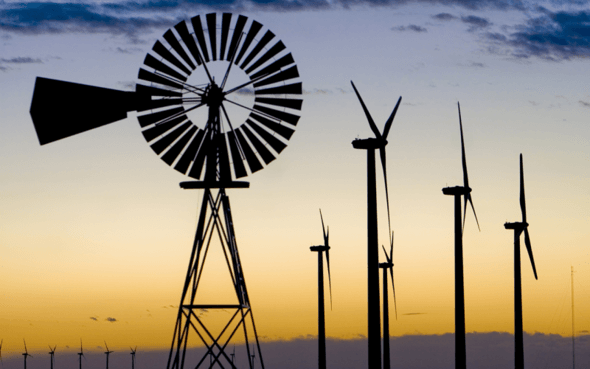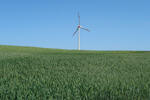Avoiding the Wake Affect
When groups of wind turbines reduce wind speed for up to several miles behind them, this has significant influence on the turbines lined up behind. They lose valuable energy production if they suddenly find themselves downwind of a new neighbor and its wind- and energy-reducing wake. This is called wake effect.
Now, a study was published, led by the University of Colorado Boulder in collaboration with the University of Denver (DU) and the National Renewable Energy Laboratory (NREL), to combine legal and economic analysis with atmospheric modeling to demonstrate that wake effects are measurable and predictable, yet remain largely unaccounted for in current U.S. property law.
“The findings highlight the need for coordinated development and awareness of the big picture in order to maximize wind energy generation nationwide,” said Julie Lundquist, lead author of the study and an associate professor in CU Boulder’s Department of Atmospheric and Oceanic Sciences (ATOC).
Wind energy developers seek out sites with reliable wind resources as well as convenient access to electrical transmission lines, leading to dense turbine deployment in choice areas with little coordination between competitors. Nearly 90 percent of U.S. wind farms are located within 25 miles of another wind farm — and often much closer.
Using publicly-available data on monthly energy generation and dominant wind direction, the researchers modeled the wake effect on a pair of West Texas wind farms, using a third as a control. They found that wind speed reductions due to the establishment of the upwind farm reduced generation at the now-downwind farm by 5 percent from 2011-2015, an estimated revenue loss of around $3.7 million.
“Just as upstream water users can knowingly or unknowingly impose additional costs downstream, the same effect is in play here,” said Daniel Kaffine, a co-author of the study and a professor in CU Boulder’s Department of Economics. “We had a general sense of this interaction before and wanted to explore it further using a mix of social science and atmospheric data.”
The results of the study, dealing with onshore as well as offshore turbines and the effects those findings may have on the industry, can be read here.
- Source:
- University of Denver
- Author:
- Windfair Staff
- Keywords:
- University of Denver, wake effect, turbines, line up, load, reduction, financial impact, onshore, offshore























